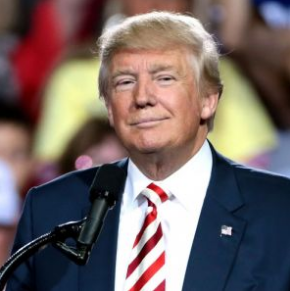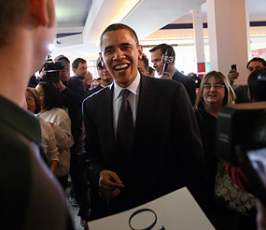How Donald Trump Won

November 15, 2016
The historic 2016 ended in one of the largest upsets in American Presidential history. Donald J. Trump, now president-elect, won key states like Ohio, Pennsylvania, and Florida that ensured his victory. However, the Democratic nominee, Hillary Clinton, was favored to win by comfortable margins. So…how’d this happen?
To the uninformed eye, a quick glance at the raw numbers might suggest low turnout as the cause for Trump’s victory. As of Wednesday afternoon, Donald Trump had won approximately 59.8 million popular votes, only slightly less than Mitt Romney’s 60.9 million popular votes. Meanwhile, Hillary Clinton won 60 million popular votes: almost six million less than Obama in 2012, and around 9.5 million less than Obama in 2008. However, despite the initial optics, the overall voter turnout was only slightly down compared to the 2012 campaign (56.5% vs 58.6%) and is expected to be on par with 2012 after all of the votes are tallied.

One possible explanation for Trumps win is the popularity of third party candidates. Libertarian Gary Johnson won over four million votes making him the most successful third party candidate since Ross Perot in 1992. In fact, the third party candidates collectively won 5% of the vote, an enormous increase from the less than 2% that they comprised in 2012.
Changing demographics also played into these results. The black vote was 12% of the electorate, down from 13% four years ago. And the white vote represented 2 fewer percentage points of the electorate compared to 2012 (70%). The Latino vote increased to 11% of the electorate from 10%. Common wisdom among pundits heading into election day was that the increased Latino vote was going to hurt Trumps. This is due to his past comments about Mexicans, specifically a Federal Judge. Trump’s remarks are considered by some to be racist. Pundits felt that this would be the nail in his presidential coffin and the cherry on Hilary’s ice cream Sunday. But, the results from the election proved this assumption wrong Ironically, the main reason why Donald Trump is the president elect is the surprising voting choice by minorities and women.
According to exit polls, which can be very unreliable, Trump a lower percentage of the white vote than Romney. Therefore experts have concluded that it was the minorities that pushed Trump over the top. To put it in raw numbers, Hillary performed 7% worse with blacks than Obama. Additionally, 29% of hispanics voted for Trump, a much higher percentage than the 20% expected to support him. And also a small uptick from the 27% support Romney had.
Further fueling a Trump win was the “secret Trump voter” that his campaign often spoke of. The “secret Trump voter” was voters that did in fact support him, but were too ashamed, shy, or embarrassed to admit it to pollsters. Even more surprising was the “secret Trump voter’s” identity, it turned out to be women.
Trump only lost women by 13%, a sharp decline from the over 20% loss that polls suggested. Digging deeper into that number, Clinton had only a 6% lead with white college educated women. And white non college educated women voted for Trump by a 28% margin. Those numbers helped him offset the 57% deficit Trump had with nonwhite women with a college degree and the 65% deficit with nonwhite women with no college degree. This underperformance with women by the first female major party nominee in US history led to her demise.
Finally, millennials did not support Hillary in the way that people anticipated. She only won 54% of them, 6% down from Obama’s 60%. And compounding this is the millennial turnout in swing states. The 18-29 yr olds voted for Clinton 16% less than they did for Obama in Florida, in PA 19% less, Wisconsin 20% less and in Ohio 16% less. That difference was huge for Trump in an election that came down to the wire.
Whilst these numbers tell the public who voted for who they do not explain why. Exit questions build a window into the minds of voters. One of those questions that separated Trump and Clinton voters, was what they wanted in a president. Trump voters overwhelmingly wanted someone who could bring change, and Clinton voters preferred a candidate with more experience. Another question that divided the voters is when they chose their candidate. Trump voters chose late, while Clinton voters decided who they wanted very early on. Also 51% of Trump voters say they chose him because they strongly dislike the other candidate, 39% of Clinton voters said the same thing. The number of Clinton voters better off financially over the past 8 years was 70% while 80% of Trump supporters were worse off. Another difference that separated the two is their view on Obama’s performance and their view of the federal government. Almost all of Clinton’s supporters were in favor of Obama and the federal government, while Trump supporters were quite opposite.
In conclusion, Donald Trump was able to secure majorities in key states across the country because of third parties, his unexpected numbers with women and nonwhites, popularity among whites, and lower millennial support for Hillary Clinton. Hilary was unable to gather the Obama coalition, while Trump redrew the electoral map with a little help from the missing white vote.
*Note All of these numbers are not final and most likely will change as the last votes are counted.






